How Cross River Therapy Uses Functional Communication Training to Help Children with Autism
Transforming Lives: The Impact of Functional Communication Training at Cross River Therapy
Understanding Functional Communication Training
Functional Communication Training (FCT) stands as a beacon of hope for many families navigating the complexities of autism. This article explores how Cross River Therapy employs this evidence-based intervention along with Applied Behavior Analysis (ABA) to address and mitigate the severe behavioral challenges faced by children with autism. With a commitment to improving communication skills and reducing disruptive behaviors, Cross River Therapy showcases the transformative power of FCT in shaping the lives of autistic children.
What is Functional Communication Training for Autism?
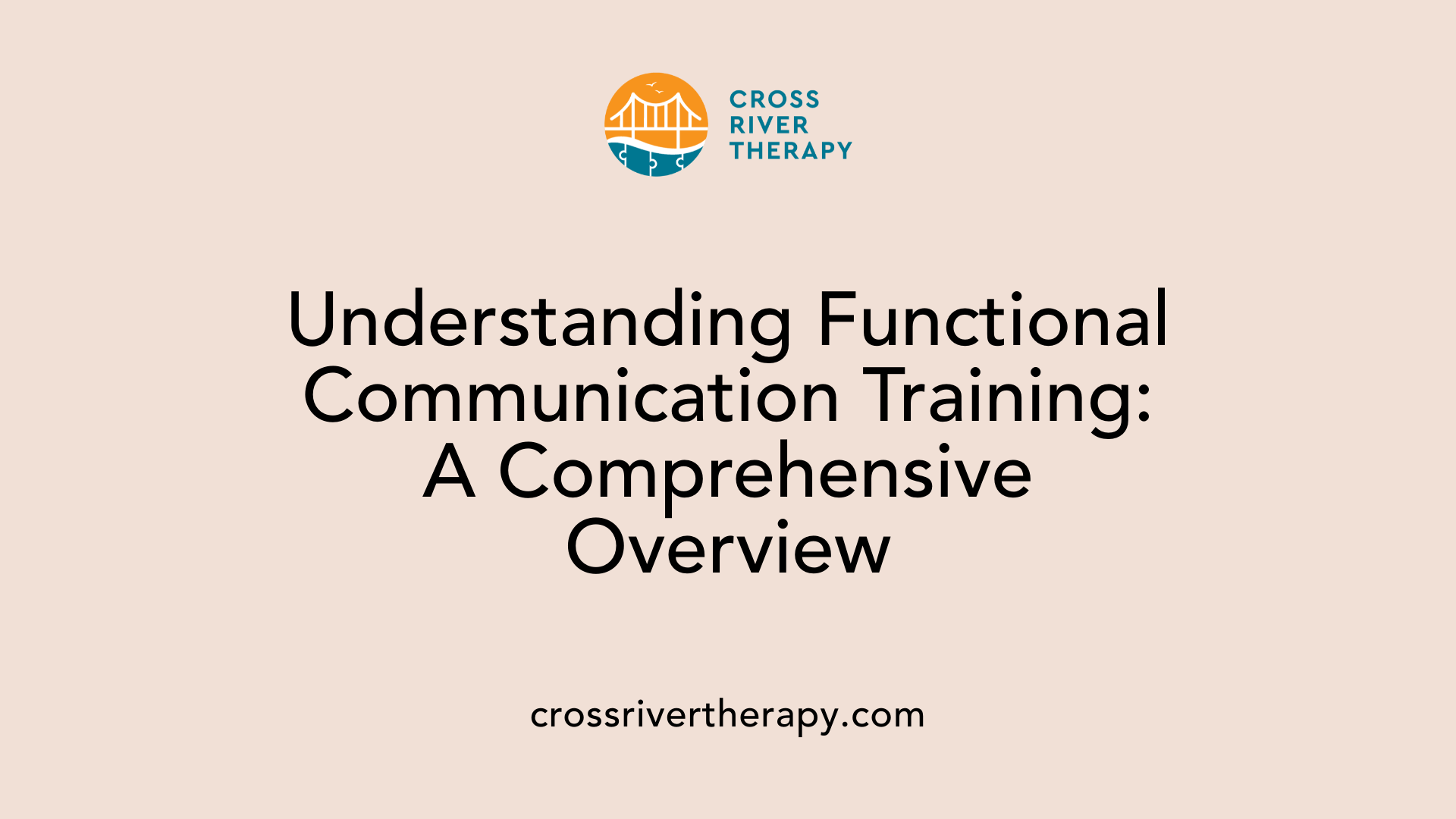
Definition of Functional Communication Training
Functional Communication Training (FCT) is an evidence-based intervention aimed at teaching effective communication skills to children with autism. Introduced by Carr and Durand in 1985, FCT is typically implemented alongside Applied Behavior Analysis (ABA) therapy. By identifying the functions of a child's challenging behaviors, FCT aims to replace these behaviors with socially acceptable communication strategies that fulfill their needs.
Purpose and Goals of FCT
The main purpose of FCT is to enhance a child's ability to express their needs and desires without resorting to disruptive behaviors. This involves:
- Teaching alternative communication responses.
- Employing positive reinforcement to encourage these new skills.
- Ensuring consistency in communication strategies used by caregivers and professionals.
Through these goals, FCT not only aims to reduce problematic behaviors but also improves compliance with adult requests, as evidenced by case studies like that of a four-year-old boy named Nathy.
Holistic Development Through FCT
Beyond communication improvement, FCT supports holistic development, including:
- Enhanced behavior management.
- Strengthened social skills.
- Better readiness for school environments.
Consequently, FCT contributes to a child's overall development while simultaneously diminishing disruptive behaviors, underscoring its effectiveness as a therapeutic approach.
Effective Communication Strategies in FCT
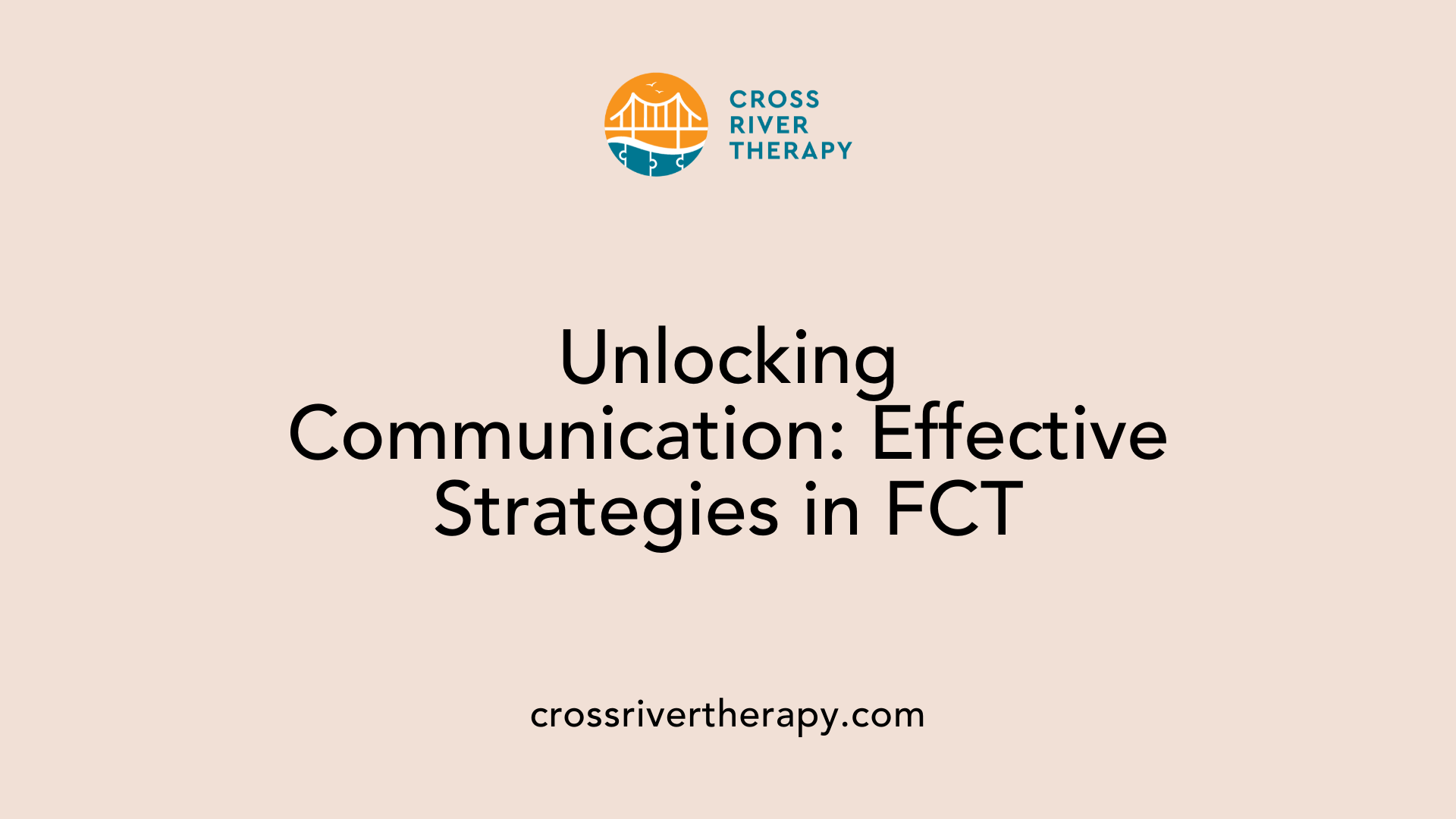
What are the communication strategies used in Functional Communication Training?
Functional Communication Training (FCT) employs various communication strategies to promote effective interaction among children with autism. Here are several key techniques:
- Avoiding Jargon and Literal Language: FCT encourages therapists and caregivers to use simple language, steering clear of jargon that might confuse the child. This helps in creating clear and concise communication channels.
- Using Multi-modal Communication: Incorporating multiple forms of communication, such as pictures, gestures, and verbal cues, supports children in expressing their needs more effectively. Diversifying communication methods can cater to different learning styles and improve understanding.
- Teaching Alternative Communication Responses: FCT focuses on specific alternative responses to replace disruptive behaviors. For example, teaching a child to use a picture card when they want a toy instead of having a tantrum allows them to communicate their desires appropriately.
The role of alternative communication forms
Alternative communication forms are pivotal within FCT. They facilitate the child's ability to convey messages, especially when verbal communication is challenging. By utilizing tools like picture exchange systems or sign language, children can express themselves, significantly reducing their reliance on challenging behaviors to get their needs met.
Teaching strategies for effective communication
Teaching strategies within FCT are designed to ensure success and consistency across environments. A systematic approach includes:
- Gradual Complexity Increase: As children master simpler concepts, therapists introduce more complex communication scenarios, such as managing delays or denials from adults. This builds patience and resilience in communication.
- Positive Reinforcement: Encouraging desired behaviors through rewards reinforces progress and motivates continued engagement in learning communication skills.
- Involvement of Caregivers: Consistency is key. Training caregivers and educators ensures that communication strategies are implemented uniformly, promoting a supportive environment for the child's development.
The integration of these techniques fosters holistic development, aiding children in effectively managing behavior and enhancing their social skills.
Efficacy of FCT in Autism Treatment
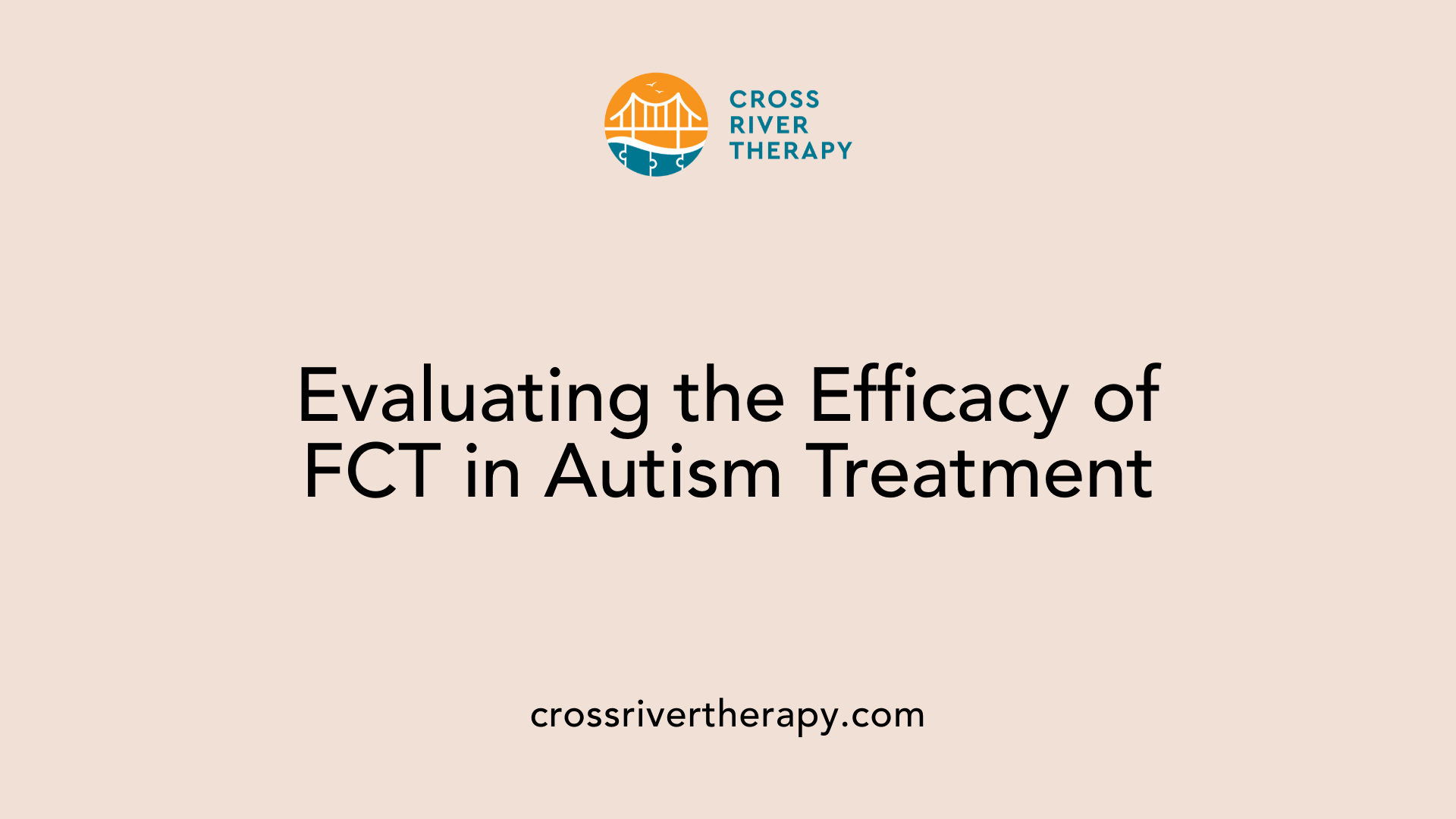
How effective is Functional Communication Training in treating autism?
Functional Communication Training (FCT) has shown considerable efficacy in treating autism by helping children replace challenging behaviors with functional communication skills. This therapy allows children the means to express their needs through various modes, such as verbal communication, signing, or visual aids.
Through a foundational understanding of learning theory and Applied Behavior Analysis (ABA), FCT underscores that all behaviors are a form of communication. Numerous empirical studies highlight FCT’s potential in reducing challenging behaviors, while simultaneously enhancing communication skills. The outcomes of such interventions yield both short- and long-term benefits, making FCT a crucial component of autism treatment plans.
Case studies on FCT impact
A notable case study centered on a four-year-old boy with autism named Nathy illustrates the potential success of FCT. After two years of ABA therapy, Nathy participated in an FCT program designed to reduce his challenging behaviors and improve compliance with adult requests.
The intervention involved around 40 hours monthly of personalized FCT, focusing on teaching alternative communication responses. Over the course of the treatment, significant reductions in challenging behaviors were observed, with compliance times increasing from an average of 40 minutes to 120 minutes by program completion. This success points to the effectiveness of tailored communication strategies.
Long-term outcomes of FCT
Beyond immediate behavioral changes, FCT promotes holistic development. It enhances essential skills such as behavior management, social interaction, and school readiness, while concurrently addressing communication deficits.
Research also shows that FCT is frequently integrated into the interventions for children with emotional and behavioral disorders, revealing its versatility and overall relevance. As interest grows in effective communication-based strategies, the continued implementation of FCT within therapy for children on the autism spectrum represents a promising avenue for promoting functional communication and improving overall life quality.
| Aspect | FCT Findings | Broader Implications |
|---|---|---|
| Effectiveness | Reduces challenging behaviors | Improves overall communication strategies |
| Case Study Insights | Compliance increased from 40 to 120 min | Demonstrates real-world applicability |
| Holistic Benefits | Enhances social skills, management, and readiness | Supports comprehensive intervention usability |
Comparing Behavioral Approaches: FCT’s Unique Role
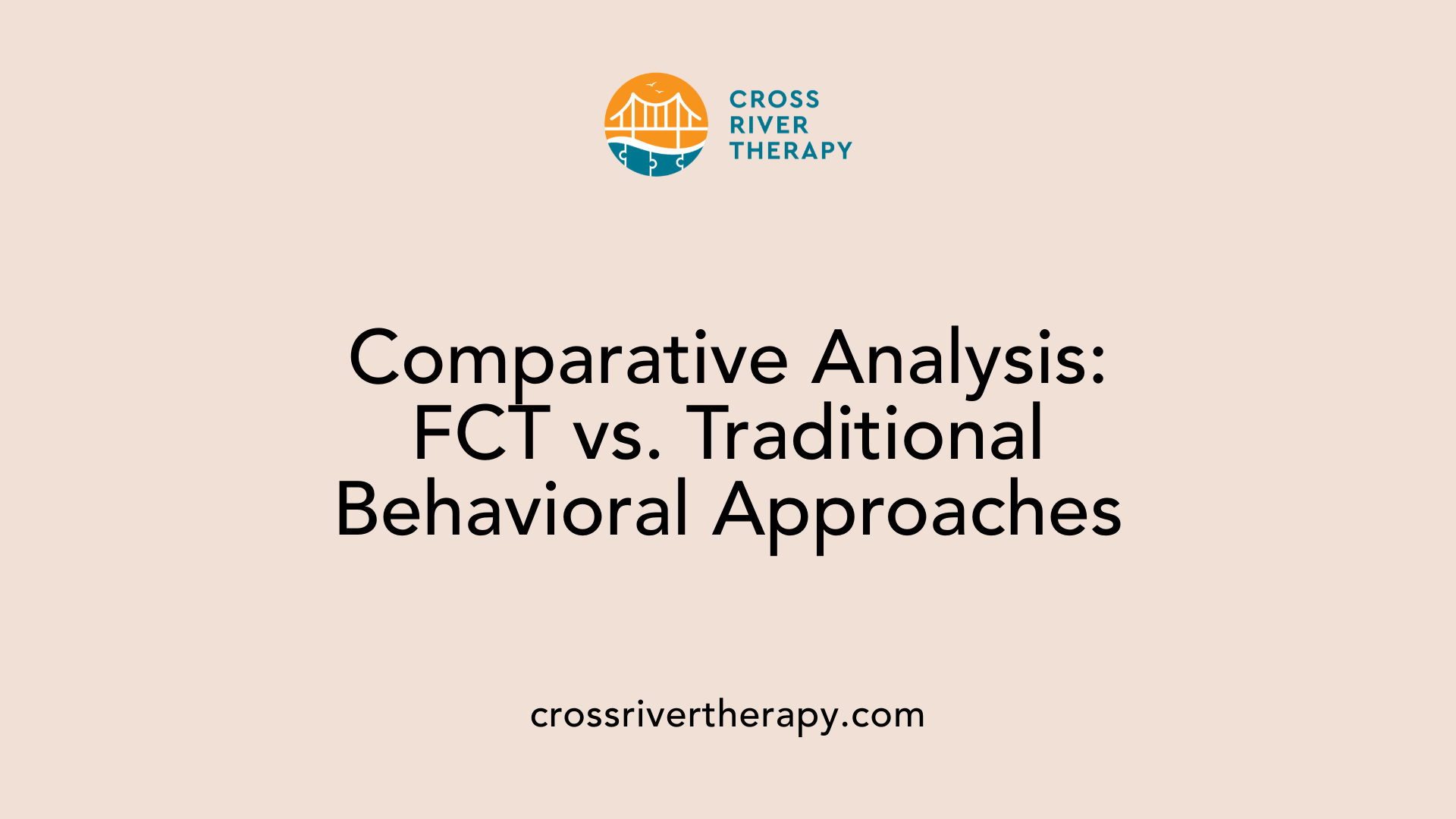
How does Functional Communication Training compare with other behavioral approaches for autism?
Functional Communication Training (FCT) stands out among various interventions by directly teaching positive communication strategies. Its goal is to replace challenging behaviors with constructive communication skills, which is essential for children with autism who often find it difficult to convey their needs.
In contrast to traditional behavior modification techniques, which may primarily focus on reducing problem behaviors through reinforcement, FCT’s holistic approach fosters both communication and behavioral improvement simultaneously. This leads to not just a decrease in disruptive actions, but also enhances the child's ability to articulate their needs effectively.
What role does speech therapy play in conjunction with FCT?
Speech therapy complements FCT by offering targeted support in developing verbal and non-verbal communication skills. Therapists employ methods such as sign language and picture exchange systems, making communication more accessible. This synergistic combination enhances communication abilities in children, including those with atypical speech or nonverbal tendencies.
Why is early intervention important?
Early intervention is critical when addressing communication deficits. Implementing FCT alongside speech therapy can significantly improve communication outcomes for young children with autism. Research indicates that such interventions are most effective when introduced early, leading to better social skills, behavior management, and school readiness. The case study of Nathy, a four-year-old boy, illustrates this: after engaging in FCT, he experienced notable reductions in challenging behaviors and increased compliance.
Overview of FCT and its Impact
| Feature | FCT | Traditional Approaches | Speech Therapy Benefits |
|---|---|---|---|
| Focus | Communication over behavior | Behavior modification | Verbal/non-verbal skills |
| Goal | Replace CB with positive CR | Reduce CB | Enhance expressive skills |
| Intervention Style | Positive reinforcement | Punishment/discipline | Visual aids, sign language |
| Age Suitability | Early intervention | Any age | Preschool onward |
FCT provides a structured, evidence-based approach that significantly benefits children with autism, resulting in improved communication and reduced behavioral issues.
Theoretical Frameworks Supporting FCT
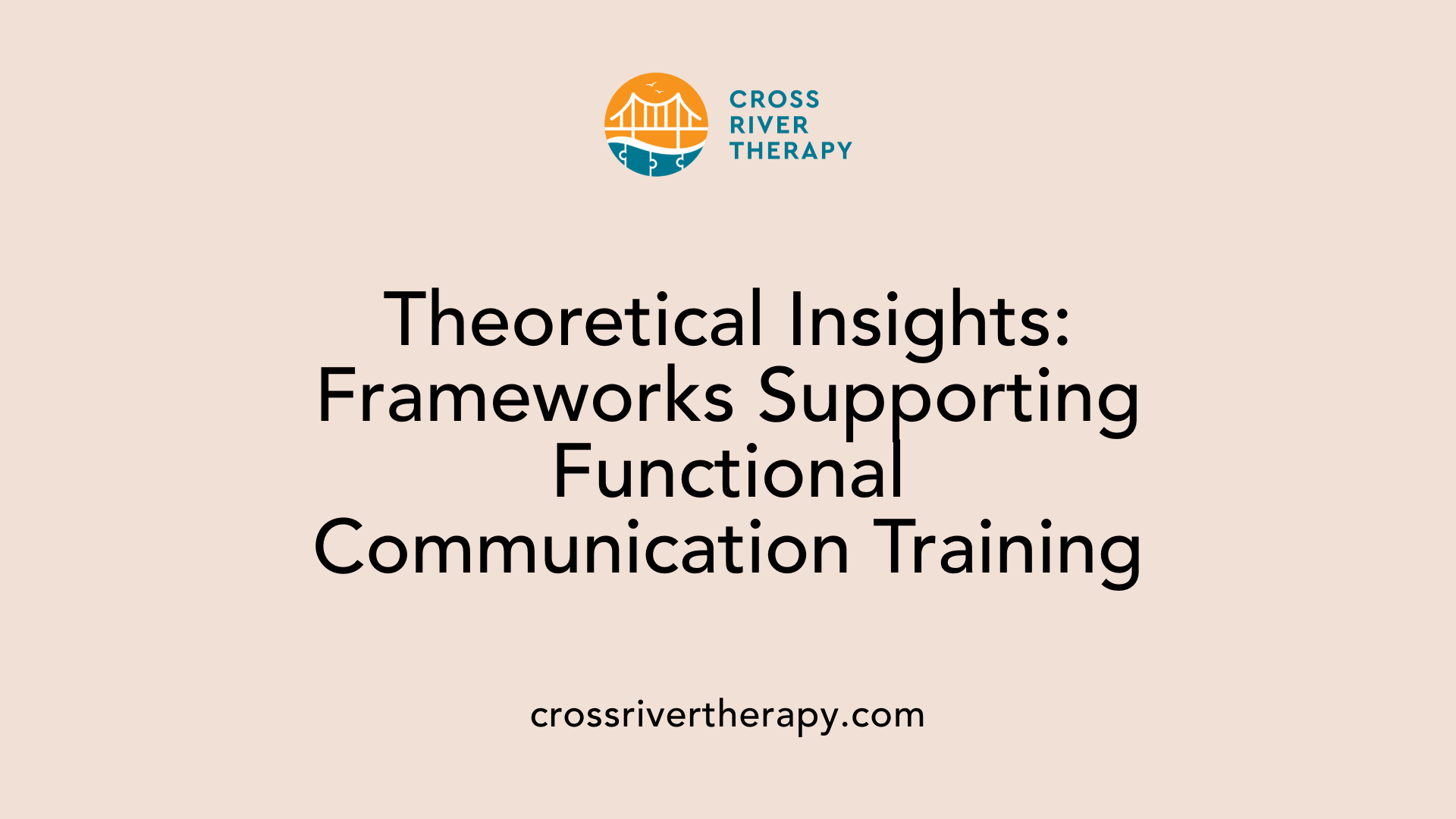
What theoretical frameworks support Functional Communication Training for children with autism?
Functional Communication Training (FCT) is anchored in several robust theoretical frameworks, prominently featuring behaviorist principles. Behaviorism posits that all behaviors are purposeful; therefore, FCT focuses on identifying and replacing challenging behaviors with effective communication modalities, such as verbal expressions, sign language, or visual aids.
The role of Applied Behavior Analysis (ABA) is crucial in this context. FCT is a practical application of ABA principles, employing systematic strategies that both teach functional communication and address the root causes of the problematic behaviors. Research underscores FCT’s efficacy in diminishing disruptive behaviors while facilitating the acquisition of vital communication skills in children with autism, particularly when it integrates with broader behavioral interventions.
The professional implementation of FCT is another essential aspect, carried out by trained experts such as psychologists and speech therapists. This ensures that each intervention is evidence-based and customized to the unique communication needs of the child, thereby enhancing the overall effectiveness and sustainability of the approach.
The Way Forward with Cross River Therapy
Cross River Therapy’s dedication to utilizing Functional Communication Training underscores the profound impact that tailored interventions can have on children with autism. By focusing on developing both simple and complex communication skills, reducing disruptive behaviors, and fostering an environment of understanding and cooperation among caregivers, Cross River Therapy not only improves quality of life for these children but also paves the way for successful integration into educational and social settings. As the field of autism therapy continues to evolve, FCT remains a cornerstone of effective intervention strategies, promising hopeful futures for children and their families.
References
- What is Functional Communication Training (FCT) in ABA Therapy
- [PDF] Autism & Related Disabilities - Semantic Scholar
- Practices Reflecting Functional Communication Training for ...
- Functional Communication Training (FCT) - Raising Children Network
- Parent guide: therapies for autistic children - Raising Children Network
- Parent guide to therapies for autistic children: FAQs
- Autism therapies & interventions | Raising Children Network



